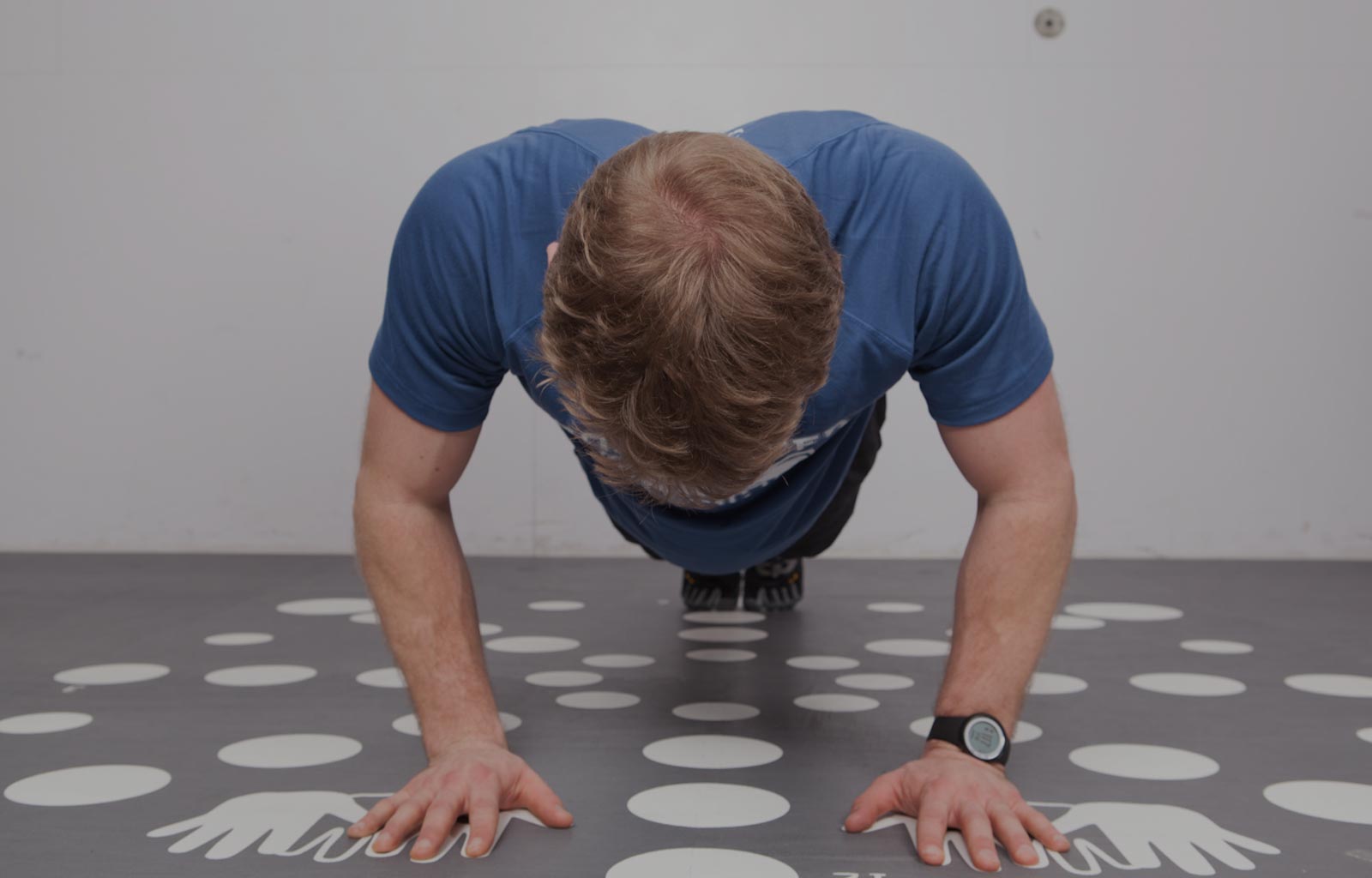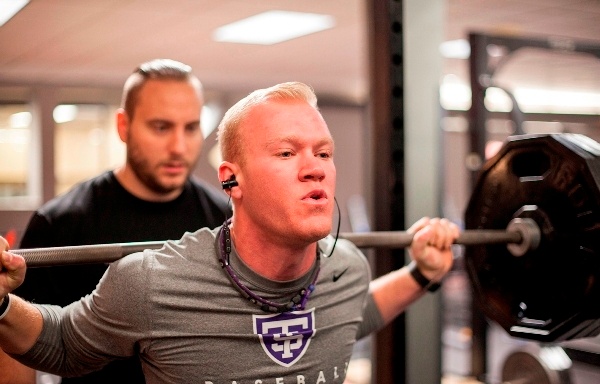Maintaining a healthy spine is important for an overall better quality of life. A healthy spine provides better support and stability, protects nerve function, and allows for proper posture and movement. In this blog I would like share information about disc injuries and then present some training options.
The spine is made up of bones and discs. The stacked bones of the spine are called vertebrae. The structures that sit between each of these vertebrae are called intervertebral discs. These discs are round soft cushions that act as shock absorbers and help prevent the vertebra from painfully rubbing against each other.
The discs are made up of two portions. A rougher outer portion and a soft gel-like inner portion. When the inner portion begins to protrude outwards, but the rough exterior is still intact, this is known as a bulging disc. When there is a tear of the outer portion and the inner gel-like portion escapes, this is referred to as a herniated disc.
Symptoms of a herniated disc can vary depending where along the spine they are located. But overall common signs include sharp back pain that might radiate to other locations, pain in the buttocks, legs, feet, or numbness and tingling to other affected areas.
Part of having a healthy spine is knowing how to train when we have injuries. When it comes to training with an injured disc we want to practice movements and stretches that do not cause pain or further damage the disc. Always work with your doctor before returning to your previous level of fitness. Your doctor will be able to review your history and work with you on a treatment plan that may include pain management and physical therapy.
You may be concerned about how to safely train while having an injured disc. The key is to start with low intensity exercises and stretches and to take a slow approach when easing back into increasingly intense training. It is important to be aware of your pain levels and to take note of what types of movements trigger your pain.
Keeping track of aggravating factors can help your doctor, physical therapist, and personal trainer have a better idea of how to help you. Do not try to push through pain as this may delay healing and cause further harm. If an exercise is causing an increase in pain, consider modifying the movement or opting for a different exercise that still targets the same muscles. Modifying the movement can include decreasing the weight used for a movement or decreasing the range of motion.
Strength Training Variations and Alternatives
While you train, focus on engaging the core with your movements, keep the back straight or neutral, and avoid rounding the lower back. These should be skills to focus on during all movements and can help prevent further injury while training. If pain persists after modifying a movement by decreasing range of motion or weight, then it might be time to try a movement alternative.
Spine and joint specialist Dr Boris Terebuh recommends several alternative weight lifting exercises when modifications do not work:
- Instead of deadlifting try weighted or unweighted hip thrusts or glute bridges. Both movements focus on the glutes and activate the back muscles.
- Instead of barbell back squats try leg extensions where you are still able to target and get a burn in your quads.
- Instead of bent-over-rows try cable rows.
- Instead of sit-ups and crunches which put extra stress on the spine, especially when done too much or with poor form, try planks or bird dogs.
- Instead of leg presses which can put stress on the lower spine when done incorrectly, try lunges with proper form and mechanics. Be sure to use lighter weights so your form is not compromised.
- Instead of leg raises, try dead bugs or reverse crunches.
Flexibility and Mobility Training
Focusing on flexibility and mobility training can also help with back pain associated with disc injuries and also help keep you active and moving. Areas of the body to start with include the hamstrings, hip flexors, lower back, piriformis muscle, and quadriceps. Here are some options for each area:
- Hamstrings
- Knee to Chest Stretch
- Seated Hamstring Stretch
- Hip Flexors
- Low Lunge
- Butterfly Stretch
- Lower back
- Cat Cow
- Child’s Pose
- Piriformis muscle
- Modified Pigeon Stretch
- Figure-Four Stretch
- Quadriceps
- Standing Foot to Glute Stretch
- Lying Foot to Glute Stretch
Having an injured disc can be painful and very disruptive to life. It is important to be patient with your healing. Healing takes time. As you work towards recovery, be intentional about keeping track of how your body feels during your training sessions and be willing to adjust accordingly. Ensure that you are including gentle stretching and mobility work into your programming. With your training go slow, set small goals, and stick with it.
RESOURCES
Bones and Spine Surgery. (2025). Anatomy of the Spine. https://www.waynecheng.com/anatomy-of-the-spine/#:~:text=the%20vertebral%20body.-,Intervertebral%20Discs,somewhat%20like%20a%20waterbed%20mattress.
Bydon, M. (2023, October 24). Herniated Disk. Mayo Clinic. https://www.mayoclinic.org/diseases-conditions/herniated-disk/symptoms-causes/syc-20354095
Mainstay Medical. (2023, August 29). Healing from Herniated Disc: Effective exercises for herniated disc in lower back. https://mainstaymedical.com/exercises-for-herniated-disc-in-lower-back/#:~:text=of%20your%20spine.-,3.,patients%20with%20lumbar%20disc%20herniation.
Novus Spine and Pain Center. (2025, March 20). Pain Management of a Bulging Disc. https://novusspinecenter.com/pain-conditions/bulging-disc
Regenerative Spine and Joint Center. (2024, September 7). Gym exercises notorious for lumbar disc damage. https://regenerativespineandjoint.com/2024/09/07/gym-exercises-notorious-for-lumbar-disc-damage/#:~:text=Similar%20to%20deadlifts%2C%20good%20mornings,avoid%20pulling%20on%20the%20neck.



